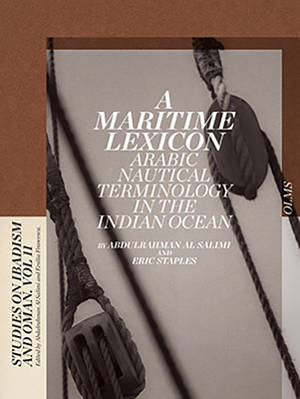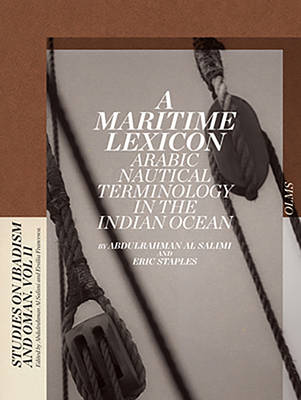
- Afhalen na 1 uur in een winkel met voorraad
- Gratis thuislevering in België vanaf € 30
- Ruim aanbod met 7 miljoen producten
- Afhalen na 1 uur in een winkel met voorraad
- Gratis thuislevering in België vanaf € 30
- Ruim aanbod met 7 miljoen producten
Zoeken
A Maritime Lexicon
Arabic Nautical Terminology in the Indian Oceanvolume 11
Abdulrahman Al Salimi, Eric Staples
€ 145,45
+ 290 punten
Omschrijving
This bi-lingual lexicon of Arabic maritime terminology reflects the Arab's linguistic relationship with the sea. It gives in-depth definitions in Arabic and English of nautical Arabic technology in the western Indian Ocean, with a particular emphasis on the eastern and southern coasts of the Arabian peninsula, and is thematically organized in five sections. Part One examines the variety of vessel types and other general terms found in Arabic literature during the Islamic period to present. Part Two explores the different terms used for constructing boats and ships in the region. Part Three looks at the rich terminology used for sailing these vessels across the seas. Part Four delves in depth into the terms used in the Arabic navigational literature, with a particular emphasis on the works of Ibn Majid and Sulayman al-Mahri. Part Five looks at the terminology used for fishing and pearling, two vital and historic industries in the Arabian Peninsula. Although this lexicon relies heavily on historical sources and classical Arabic lexicons, it also applies an interdisciplinary approach, integrating oral and archaeological evidence whenever possible to supplement our understandings of these terms. Collectively, it records the linguistic wealth found in the Arabic language.
Specificaties
Betrokkenen
- Auteur(s):
- Uitgeverij:
Inhoud
- Aantal bladzijden:
- 611
- Taal:
- Engels
- Reeks:
- Reeksnummer:
- nr. 11
Eigenschappen
- Productcode (EAN):
- 9783487153933
- Verschijningsdatum:
- 1/07/2019
- Uitvoering:
- Hardcover
- Formaat:
- Genaaid
- Afmetingen:
- 241 mm x 305 mm
- Gewicht:
- 3120 g

Alleen bij Standaard Boekhandel
+ 290 punten op je klantenkaart van Standaard Boekhandel
Beoordelingen
We publiceren alleen reviews die voldoen aan de voorwaarden voor reviews. Bekijk onze voorwaarden voor reviews.








